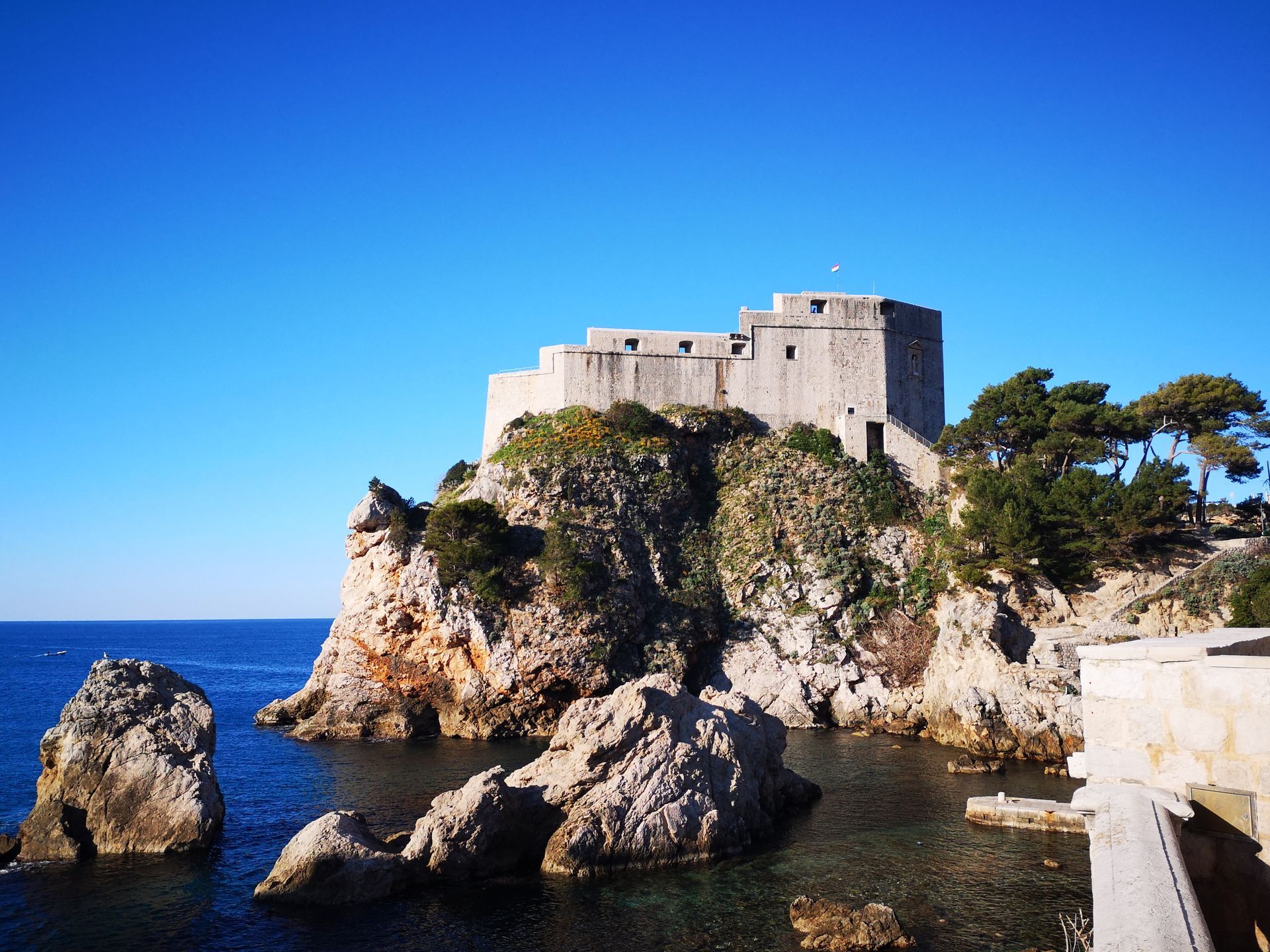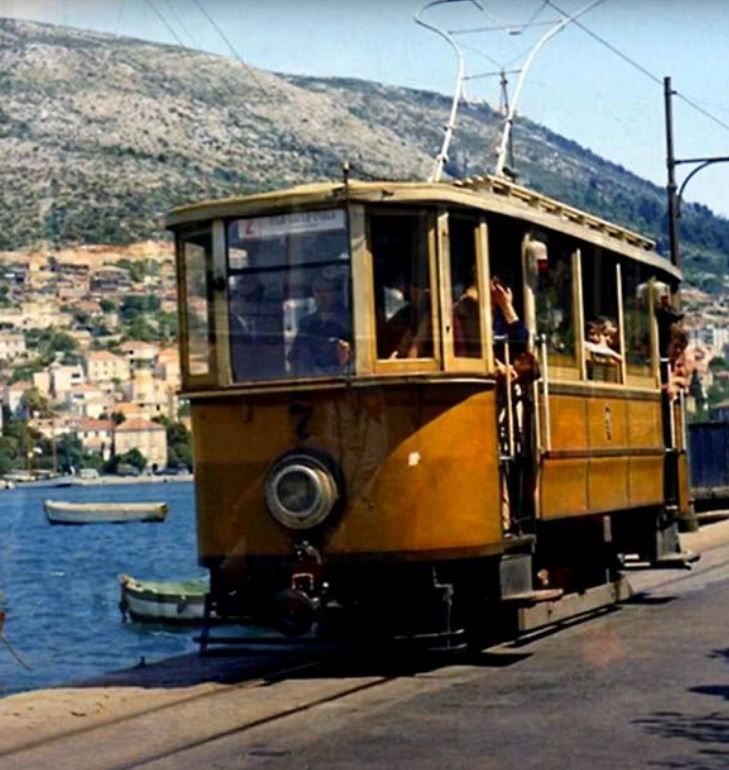By Vlaho Lujo
•
April 16, 2023
The mighty Fortress of Saint Lawrence (hrv. Lovrijenac) was built on a rock 37 meters above sea level. This detached fortress is of great importance for the defense of the western part of Dubrovnik, both from the attack from the land and from the threat from the sea. The fortress is mentioned in a legend from the eleventh century, but certain information about it dates back to the fourteenth century, since its foundations basis date back to that period. In the following centuries, it underwent numerous reconstructions. The main restoration was experienced at the same time as other Dubrovnik fortresses, in the fifteenth and sixteenth centuries. At that time, the renown builder I. K. Zanchi from Pesaro fortified the bulwark. The fortress was significantly strengthened in 1418, and improvements were added between 1421 and 1424 when the threat of Radoslav Pavlović arose. Juraj Dalmatinac also carried out the reconstruction of the fortress and made it an almost impenetrable fortress. It seems that Juraj Dalmatinac stopped his service in Dubrovnik in 1465, perhaps in order to escape from the plague. In his place came a state builder, a native of Dubrovnik, Paskoje Miličević, who will serve the Republic for as long as 51 years. The triangular layout, adapted to the shape of the rock on which it was built on, turned the fortress towards its narrowest and highest part towards the western suburbs of the old city, while its longest wall surface opens towards Bokar and the western old city walls, thus protecting the small port of Cove of Kolorina. Inside the fortress there is a square yard. The fortress was defended by 10 cannons among being the famous “Lizard” cannon”. The famous caster of cannons and bells, Ivan Krstitelj Rabljanin (John Baptist of Rab, born in Rab c. 1475, died in Dubrovnik, 1540). The Republic commissioned him to cast ten cannons, none of them existing in Dubrovnik any longer. His master-piece was cast in 1537 and named the “Lizard” after the custom that gave cannons the names of animals or fantastic creatures. This cannon had the Latin inscription that freely translated comes to: “AD 1537 / If the omnipotent Jupiter decides to destroy / cruel humankind, my strength / would exert, more than Jupiter’s, / fierce force, skillfully created / by Baptist’s hand. / Opus of Baptist of Rab / On Fortress Lovrjenac. When the French arrived in 1806, they registered 133 bronze cannons in Dubrovnik, but they also introduced the practice of recasting larger bronze and iron cannons that was taken over by the Austrians who came in 1814 so that some cannons were transported to Vienna, while a certain number remained missing. The tradition says that when the Austrians were removing cannons from the Fortress of Saint Lawrence, the “Lizard” cannon was too long to be taken out through the fort doors so they tried to lower it down the walls and rocks of the fortress but it fell to the bottom of the sandy seabed. In the end of the 19th century, it was said that when the sea was calm the cannon could have been seen down there. Despite knowing the approximate location, all the attempts to recover it have failed. Since the fortress has a dominant position and whose possess it would endanger the safety of Dubrovnik, during its construction the wisdom and caution of the Republic once again came to the fore. Thus, the thickness of the wall in the parts that are highlighted according to the possible external danger reaches almost 12 meters, and the large wall surface of the fortress facing the western city walls does not exceed 60 centimeters. The caution of the people of Dubrovnik was directed not only towards the external enemy, but also towards the possible usurpation of the authorities of the commander of the fortress. Therefore, a possible rebel was permanently exposed to the danger of destroying the thinnest wall of the fortress. In order to further reduce the risk of betrayal, the people of Dubrovnik changed the commander of the fortress (known as the captain, selected from the ranks of the nobility, every month. Freedom was thus preserved in the Dubrovnik Republic in all possible ways. This is evidenced by the famous Latin inscription at the front door in the fortress: Non bene pro toto Libertas venditur auro. “Freedom cannot be sold for all the gold in the world”. The Fortress fo Saint Lawrence was partially destroyed in a great earthquake in 1667, but was rebuilt during the seventeenth century. In 1886 the fortress lost its strategical function after the Austrians demilitarized it. From that time, it was used as barracks, but unlike the French who did not touch the antiquities, the Austrians arbitrarily changed the appearance depending on the purpose for which certain buildings were used. So, on the fortress openings for cannons were expanded into windows and the drawbridge in front of the entrance was replaced by a concrete slab. At the beginning of the 20th century Austria lost interest in this fortress and left it, the facility (to the general disapproval of the people of Dubrovnik) was ceded to the hotel company “Liburnija”. From April 4, 1911 until the beginning of World War I, a cannon was fired at 12:00 o’clock from the fortress every day marking noon. It is recorded that the meeting of the International Pen Club was held in 1933. In this occasion the fortress was decorated and a stairway was built for the purpose of holding this gathering, but also for other events. During World War II, the fortress was under the Italian administration and it was used as a prison for the partisans. The fortress went under mutilation as many reinforced concrete partitions were built, which were later demolished in 1945 after the capitulation of Italy. After 1950, the rehabilitation of the facility begins, primarily the sidewalks and guards are repaired, and already in 1952, with the aim of protecting and preserving the walls and fortresses, the Society of Friends of Dubrovnik Antiquities was founded, which to this day successfully manages, maintains and restores this national and cultural heritage. Today the Fortress of Saint Lawrence is known for his performance of Shakespeare's ''Hamlet'', which has become a trademark of the Dubrovnik Summer Festival founded in 1950.



